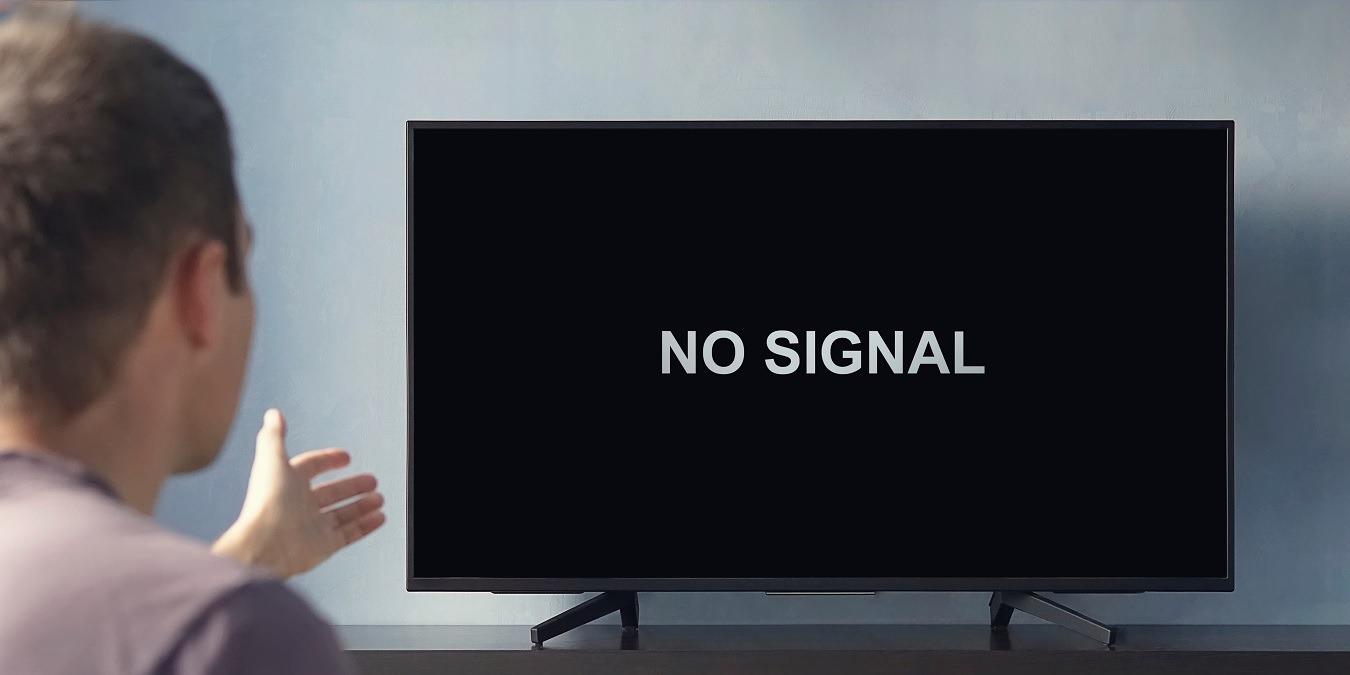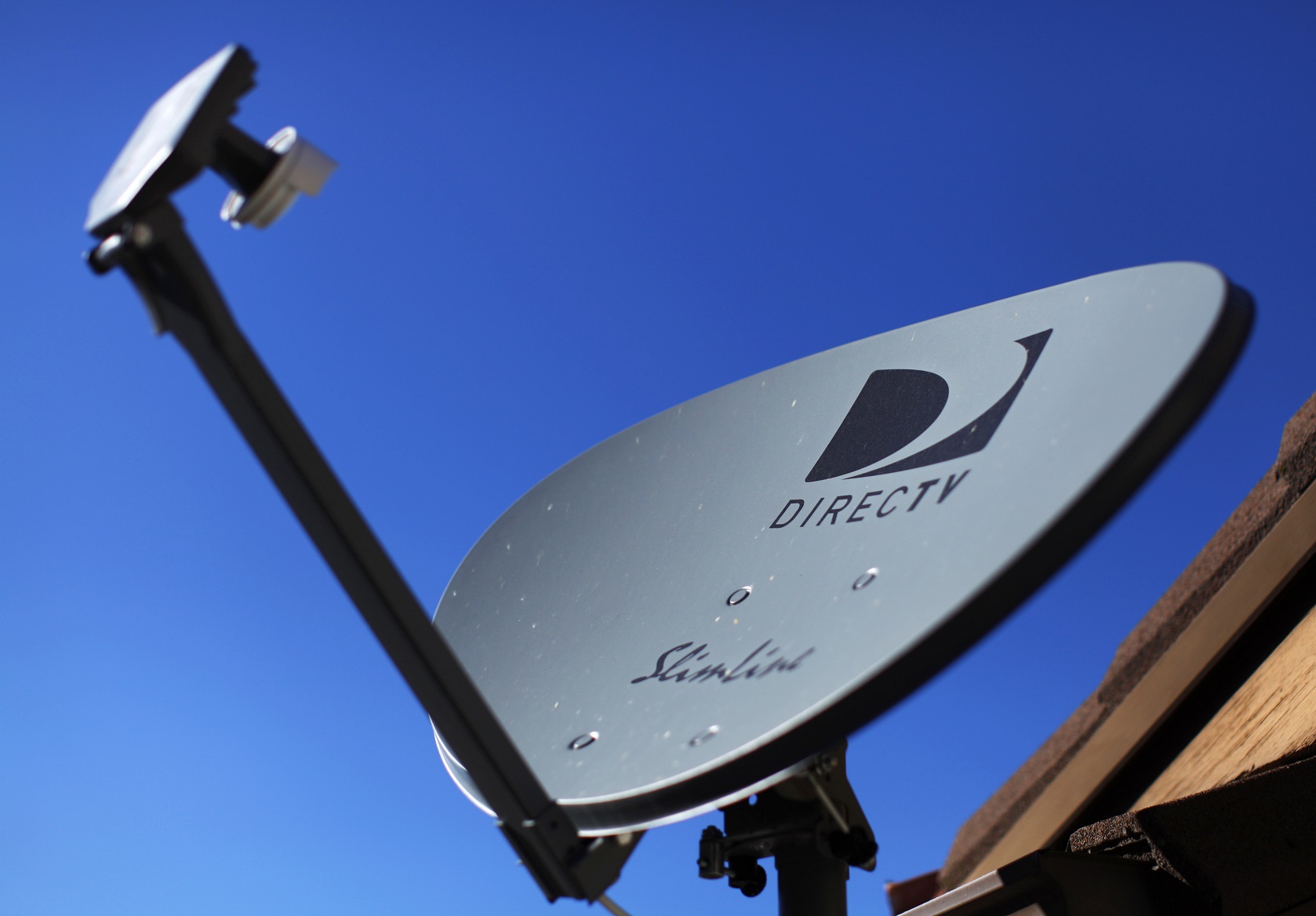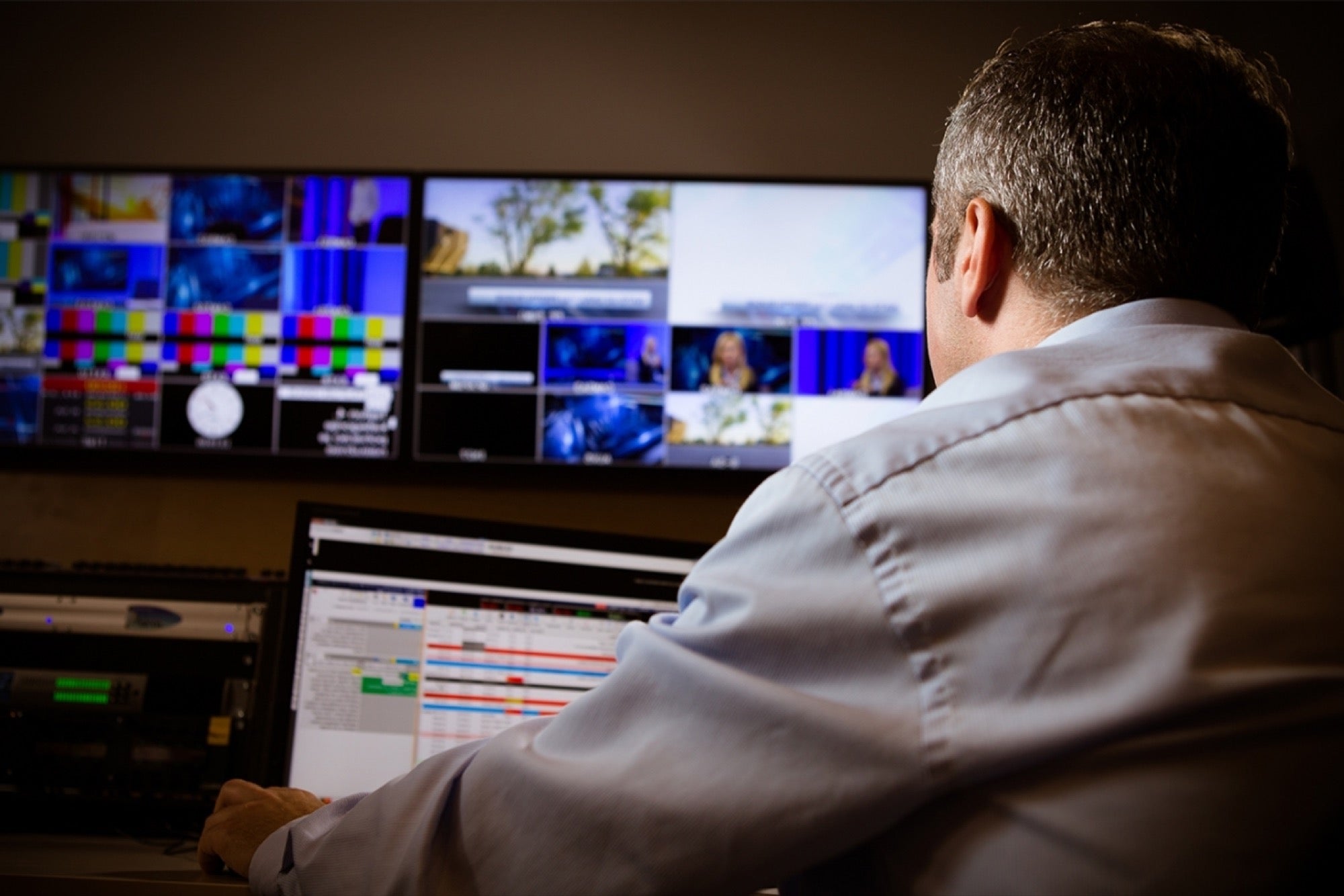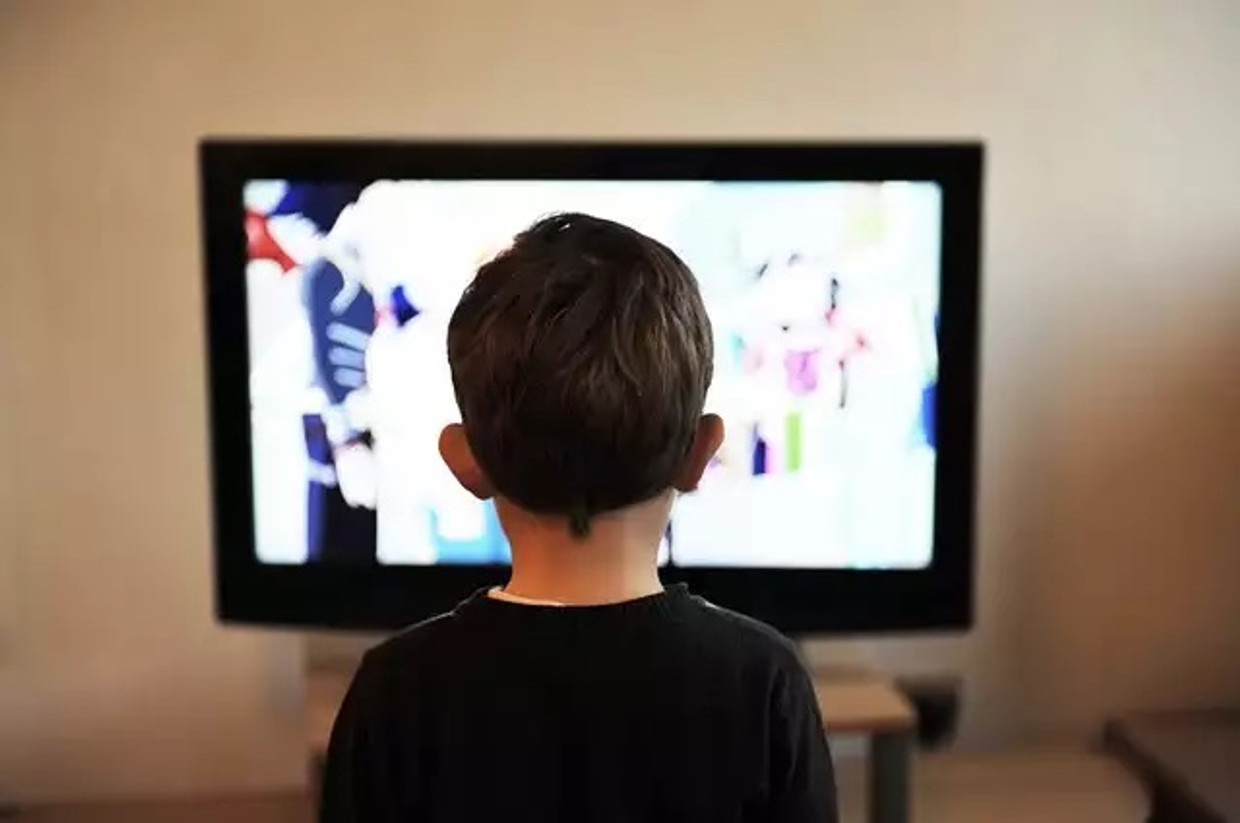Home>Technology>Home Entertainment Systems>What Kind Of Wavelength Do Television Signals Have?


Home Entertainment Systems
What Kind Of Wavelength Do Television Signals Have?
Modified: October 20, 2024
Discover the wavelength of television signals and how they work with home entertainment systems. Learn about the technology behind TV signals.
(Many of the links in this article redirect to a specific reviewed product. Your purchase of these products through affiliate links helps to generate commission for Storables.com, at no extra cost. Learn more)
Introduction
Welcome to the exciting world of home entertainment systems! In this digital age, television has become an integral part of our lives, offering a diverse range of programming that caters to our interests and preferences. Whether it's the latest blockbuster movie, a thrilling sports event, or a captivating documentary, television brings the world into our living rooms, providing endless hours of entertainment and information.
As technology continues to advance, the way television signals are transmitted and received has undergone significant transformations. One of the fundamental aspects of television signals is their wavelength, a critical component that influences the quality and clarity of the images and sound we experience on our screens.
In this article, we'll delve into the fascinating realm of television signal wavelengths, exploring the intricacies of these electromagnetic waves and their impact on the viewing experience. By gaining a deeper understanding of wavelength and its role in television signals, you'll be better equipped to appreciate the marvels of modern home entertainment systems and the science behind the seamless delivery of audiovisual content.
So, sit back, relax, and prepare to embark on a journey through the wavelengths of television signals, where science and entertainment converge to enrich our viewing pleasure. Let's unravel the mysteries of these invisible waves that bring our favorite shows and events to life on screen.
Key Takeaways:
- Television signals have different wavelengths, which affect picture quality and sound fidelity. Longer wavelengths (VHF) cover more area, while shorter wavelengths (UHF) deliver higher resolution and better audio.
- Understanding wavelength helps us appreciate the science behind high-definition TV and immersive sound. It’s like the invisible conductor orchestrating the symphony of home entertainment, enriching our viewing pleasure.
Read more: What Kind Of Fireplace Do I Have
Understanding Wavelength
Before we delve into the specifics of television signal wavelengths, it’s essential to grasp the concept of wavelength itself. Wavelength is a fundamental property of waves, including electromagnetic waves such as those used in television signal transmission. In simple terms, it represents the distance between successive crests of a wave, and it plays a crucial role in determining the characteristics of the wave’s propagation.
When it comes to electromagnetic waves, which encompass a broad spectrum of frequencies and energies, the wavelength is inversely proportional to the frequency of the wave. This means that waves with higher frequencies have shorter wavelengths, while waves with lower frequencies exhibit longer wavelengths. For instance, visible light comprises a spectrum of colors, each corresponding to a specific wavelength, with red light having a longer wavelength than blue light.
Furthermore, the concept of wavelength is intricately linked to the propagation of electromagnetic waves through various mediums, including the atmosphere and optical fibers. Understanding the behavior of waves as they travel through space and encounter different materials is essential in comprehending how television signals, which are transmitted as electromagnetic waves, reach our homes with remarkable fidelity.
Moreover, the wavelength of a wave is directly related to its energy and the information it carries. In the context of television signals, the wavelength influences the resolution and clarity of the transmitted images, as well as the fidelity of the accompanying audio. This interplay between wavelength and the perceptible qualities of audiovisual content underscores the significance of wavelength in the realm of home entertainment systems.
By grasping the intricacies of wavelength and its role in the transmission of electromagnetic waves, we can gain a deeper appreciation for the technological marvels that enable us to enjoy high-definition television programming and immersive sound experiences. Now that we’ve laid the groundwork for understanding wavelength, let’s turn our focus to the specific wavelengths associated with television signals and their implications for the viewing and listening pleasure they deliver.
Television Signal Wavelength
Television signals, which consist of both video and audio components, are transmitted using electromagnetic waves within a specific range of frequencies. These waves exhibit distinct wavelengths that are integral to the transmission and reception of television programming. In the context of television technology, the wavelengths of electromagnetic waves are closely tied to the resolution, clarity, and fidelity of the audiovisual content delivered to our screens and speakers.
Television signals are typically transmitted in the form of radio waves, specifically within the frequency range allocated for broadcast and cable television. The electromagnetic waves used to convey television signals possess wavelengths that correspond to the frequencies at which the signals are transmitted. For example, in the United States, over-the-air television signals are allocated frequencies in the Very High Frequency (VHF) and Ultra High Frequency (UHF) bands, each of which corresponds to specific wavelength ranges.
In the VHF band, television signals are transmitted using electromagnetic waves with wavelengths ranging from approximately 1.5 to 4 meters, depending on the specific channel assignment. These longer wavelengths enable VHF signals to propagate over greater distances and penetrate obstacles such as buildings and foliage, making them suitable for widespread coverage in both urban and rural areas.
On the other hand, the UHF band encompasses higher frequencies, resulting in shorter wavelengths that typically range from about 0.33 to 1 meter for television signal transmission. The shorter wavelengths associated with UHF signals allow for the transmission of more data within the same bandwidth, facilitating the delivery of high-definition and digital television formats with enhanced picture and sound quality.
It’s important to note that the choice of frequency bands and corresponding wavelengths for television signal transmission is influenced by various factors, including spectrum availability, signal propagation characteristics, and technological advancements in broadcasting and receiving equipment. As a result, different countries and regions may employ distinct frequency allocations and wavelength ranges for television broadcasting, reflecting the diverse approaches to optimizing signal coverage and quality.
By understanding the relationship between television signal frequencies and their associated wavelengths, we can appreciate the technical considerations that underpin the seamless delivery of television programming to our homes. The specific wavelengths of electromagnetic waves used in television signal transmission form the backbone of the captivating audiovisual experiences that enrich our daily lives.
Television signals have a wavelength range of 1 to 10 meters, falling within the UHF (ultra high frequency) and VHF (very high frequency) bands. These wavelengths allow the signals to travel through the air and be received by antennas on TVs.
Importance of Wavelength in Television Signals
The wavelength of television signals holds profound significance in shaping the viewing and listening experiences that enrich our lives. From the clarity of on-screen images to the fidelity of accompanying audio, the impact of wavelength on television signals is multifaceted and far-reaching, influencing the quality and reliability of the content delivered to our home entertainment systems.
One of the primary implications of wavelength in television signals is its role in defining the resolution and picture quality of the transmitted images. The specific wavelengths of electromagnetic waves used in television signal transmission directly affect the level of detail and sharpness that can be reproduced on our screens. Longer wavelengths, as found in VHF television signals, are adept at traversing extended distances and penetrating obstacles, making them suitable for broad coverage areas. However, these longer wavelengths may pose limitations on the resolution and visual fidelity achievable, particularly in the context of high-definition and ultra-high-definition content.
Conversely, the shorter wavelengths associated with UHF television signals enable the transmission of higher-resolution formats, including digital television and immersive 4K content. The ability to convey intricate visual details and vibrant colors is intricately linked to the shorter wavelengths of UHF signals, underscoring their pivotal role in delivering captivating and lifelike imagery to viewers.
Furthermore, the importance of wavelength extends to the realm of audio fidelity in television signals. The wavelengths of electromagnetic waves carrying audio components influence the clarity, depth, and spatial accuracy of the sound reproduced by home theater systems and audio equipment. By leveraging shorter wavelengths, UHF television signals can accommodate enhanced audio formats, including multi-channel surround sound and immersive audio technologies, enriching the auditory dimension of the viewing experience.
Another crucial aspect of wavelength’s importance in television signals lies in its impact on signal propagation and reception. The characteristics of electromagnetic waves, as determined by their wavelengths, influence the ability of television signals to propagate through various environments and reach receiving antennas with optimal strength and integrity. Understanding the interplay between wavelength and signal propagation is vital in designing broadcast networks and optimizing the coverage and reliability of television signal reception for diverse audiences.
Ultimately, the importance of wavelength in television signals transcends technical considerations, shaping the very essence of our engagement with audiovisual content. By recognizing the profound influence of wavelength on resolution, picture quality, audio fidelity, and signal propagation, we can gain a deeper appreciation for the intricate science that underpins the seamless delivery of television programming to our homes.
Conclusion
As we conclude our exploration of television signal wavelengths, we’ve uncovered the pivotal role that these electromagnetic waves play in shaping the captivating audiovisual experiences that enrich our daily lives. From the transmission of high-definition imagery to the faithful reproduction of immersive sound, the influence of wavelength extends far beyond the technical realm, permeating the very fabric of our home entertainment systems.
By gaining a deeper understanding of wavelength and its implications for television signals, we’ve come to appreciate the intricate interplay between frequency, wavelength, and the quality of audiovisual content. The allocation of specific frequency bands for VHF and UHF television signals reflects a delicate balance between coverage, resolution, and signal fidelity, underscoring the meticulous engineering that underpins the seamless delivery of television programming to our homes.
Moreover, the importance of wavelength in television signals extends to the realms of signal propagation and reception, influencing the reach and reliability of broadcast networks and the performance of receiving equipment. The ability of electromagnetic waves to traverse diverse environments and reach audiences with uncompromised clarity and strength hinges on the strategic utilization of specific wavelengths tailored to the unique characteristics of each frequency band.
As technology continues to evolve, the landscape of television signal transmission and reception will undoubtedly undergo further refinements, driven by innovations in broadcasting standards, signal processing technologies, and consumer preferences. Through these advancements, the influence of wavelength will persist as a cornerstone of the viewing and listening experiences we cherish, ensuring that future generations continue to be enthralled by the wonders of home entertainment systems.
In essence, the invisible wavelengths of television signals encapsulate a symphony of scientific ingenuity, artistic expression, and technological prowess, converging to deliver moments of joy, inspiration, and discovery to audiences around the world. As we revel in the immersive worlds brought to life on our screens and resonate with the emotive power of cinematic soundscapes, let us marvel at the profound impact of wavelength, the silent conductor orchestrating the symphony of home entertainment.
So, the next time you tune in to your favorite television program or lose yourself in the magic of a cinematic masterpiece, take a moment to ponder the invisible waves that traverse the air, carrying with them the essence of human creativity and storytelling. For within those waves lie the echoes of our collective imagination, harmonizing to create the timeless melodies of television entertainment.
Frequently Asked Questions about What Kind Of Wavelength Do Television Signals Have?
Was this page helpful?
At Storables.com, we guarantee accurate and reliable information. Our content, validated by Expert Board Contributors, is crafted following stringent Editorial Policies. We're committed to providing you with well-researched, expert-backed insights for all your informational needs.
















0 thoughts on “What Kind Of Wavelength Do Television Signals Have?”